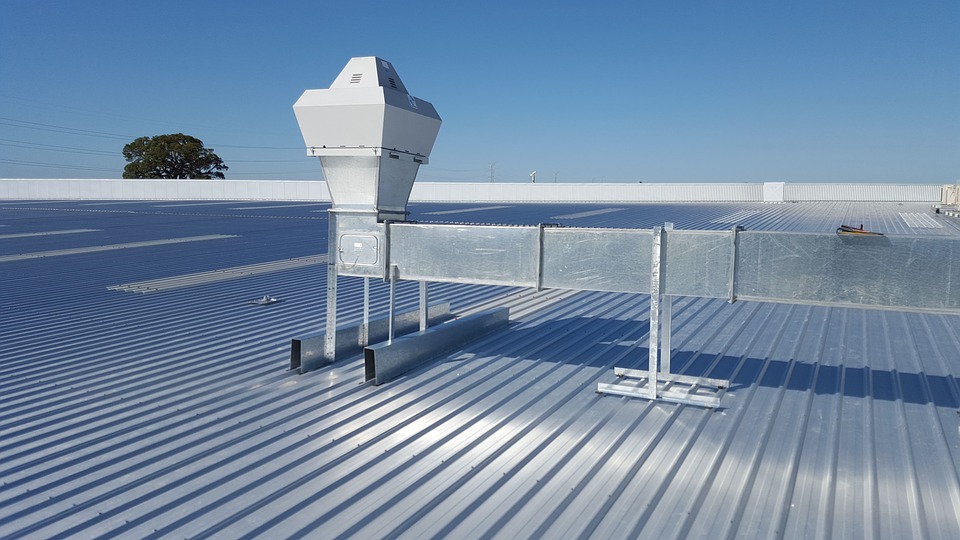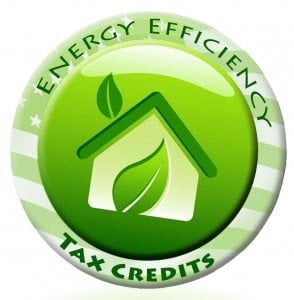How to Grow Your HVAC Business with Electrical Capabilities
 June 21, 2022 - 5 MIN READ
June 21, 2022 - 5 MIN READ
Should you stay or should you go — electrical, that is? The answer depends on your long-term vision for how to grow your HVAC business.
Executive summary
Like many HVAC company owners, you are likely considering how to grow your HVAC company responsibly. This article explores the possibilities of adding electrical services to your expansion while increasing your profitability and name recognition.
Energy industry changes
Homeowners have converted gas appliances to electric since Thomas Edison invented the light bulb. But electrification hit a brick wall when the price of fossil fuels made them a more attractive alternative. Contractors were no longer asking how to grow an HVAC business. Growth was a simple matter of hiring more employees to cover the burgeoning business.
Now the tide is slowly turning the other way. HVAC contractors with electrical capabilities are in high demand. The green movement holds sway over the public mind right now. Contractors interested in cashing in on this trend should consider combining HVAC and electrical services.
How to grow your HVAC business responsibly
Your first step toward responsible HVAC business growth is to perform a SWOT analysis. This in-depth business review gives you the knowledge you need about your present business and enables you to plan for future growth.
A true SWOT analysis requires you to take an honest, dispassionate assessment of your current HVAC business and local market. To do so, you will need the input of all your major players — from your financial department to sales, marketing, office staff, and installers.
The easiest way to perform and visualize a SWOT analysis is to draw a simple plus sign. Label the upper left quadrant "Strengths" and the upper right "Weaknesses." Label the lower two quadrants "Opportunities" and "Threats."
Bear in mind that even though you own your HVAC company, you are not necessarily the expert on all aspects of daily business. This is the time to request and respect brutal honesty from your employees.
After filling in all quadrants, suppose you determine that your greatest strength is your customer service. This is an excellent strength, as trust in your potential expansion depends on your customers believing you provide superior customer service.
In the Weakness quadrant, you might not currently have anyone on staff qualified to perform electrical work. You can add electrical capabilities to your HVAC business two main ways, internally and externally Internally you can hire and train your own electricians or acquire an existing electrical company to add to your business. Externally you can subcontract or form a partnership with an electrical contractor company.
All options have merit. However, upskilling your current staff demonstrates that you are willing to invest in their future, making them more vested in your company's success.
Your Opportunities quadrant demonstrates all the benefits of expansion. You can work with the growing green economy. You can increase your product line. You can streamline your own facility to give customers a hands-on feel for how HVAC and electrical capabilities work hand-in-glove to provide greater efficiencies.
The final quadrant, Threats, includes anything that is dragging down your current business model and may interrupt any future expansion. Threats could include the rising cost of construction materials, disrupted supply chains, or impending regulations. One large threat could be a competitor who already offers the HVAC/electrical combination service.
Always remember that a threat is simply an opportunity waiting for a solution.
Conduct a thorough market analysis
You may want to include electrical capabilities in your HVAC company, but without a market analysis, you have no idea if that idea will soar or flop.
On a high level, many government, utility, and manufacturer rebates exist to entice homeowners into using more eco-friendly and cost-efficient options. However, if these incentives do not outweigh the up-front cost and installation of such products in your market, you may invest in an HVAC business growth plan that never gains traction.
One item to consider is the average age of construction in your region. Older homes may require major upgrades to their electrical systems to handle the increased load of clean energy. These homeowners generally prefer to replace aging fossil-fuel HVAC systems with their modern and more energy-efficient equivalent.
Along the same lines, consider the electric grid that services your market. Older electric grids may not be able to absorb the extra power drain of homes switching to electric appliances. Also, consider the power source of your service area's electric grid. If the original power source does not offer green choices, it will be more difficult to sell homeowners on buying into a "green initiative" when the power grid obtains its electricity from coal or other fossil fuels.
Know what climate zones your company services. Electric heat pumps work most efficiently when they rely on the outside temperature. In other words, the more temperate the climate, the lower the electricity draw.
Colder climates are forced to rely on a combination of the outside temperature and the inside temperature. When these two numbers are far apart, the electric heat pump turns to its resistance coils to keep the inside temperature comfortable. Resistance coils draw far more power than a single heat pump unit.
Finally, understand your competition. Know the services they provide and ensure that your company can exceed their standards. If the market for HVAC and electrical is already full in your area, your growth plan may well be to simply grow into focusing on the electrical end of things.
Determine the profitability of electrical capabilities
The U.S. Department of Labor predicts 8% growth in the HVAC field by 2030. That figure alone should encourage you to develop a growth plan. A closer look at the reasons for this projection will help you decide how to grow most effectively.
One reason is simply the weather. The past seven summers have been the hottest on record. This early, prolonged, and intense heat stresses HVAC systems, causing them to malfunction and break down sooner than normal. Even without electrification, HVAC contractors have experienced record business growth.
Unfortunately, this growth occurred just as supply chain issues created delays in finding replacement parts. Between the increased temperatures and the inability to repair existing units, homeowners and multifamily property owners turned to other methods of cooling their buildings.
Green is the new black when it comes to energy consumption, especially in areas where climate change is a front-burner topic. Switching from fossil-fuel HVAC to electrical is a common practice. These areas of the country have been slowly moving toward cleaner sources of energy, such as solar and wind, for decades. As the momentum grows, the price of electricity will fall, making it cheaper than fossil fuels.
A second advantage of going green is improved indoor air quality. While most people concentrate on the environmental pros of reducing America's dependence on fossil fuels, few focus on the poor indoor air quality of homes that rely on gas HVAC systems, stoves, and other appliances. Homes and multifamily properties with gas stoves contain far more air pollutants than properties with electric stoves.
When this gas is combined with the other particulates created by burning fossil fuels, renters and homeowners often experience more frequent respiratory illness than their electrified counterparts. Given that most people spend up to 90% of their time indoors, whether at work or at home, fossil fuels can induce or inflame asthma, allergies, and other respiratory conditions.
Depending on where your HVAC business is located, all these indoor and outdoor public health benefits weigh heavily in your equation for when and how to grow your HVAC business. Consider expanding into office buildings, manufacturing facilities, and other large complexes where you can make the best use of the electrical capabilities within your company. Offer to look at these larger buildings holistically instead of simply replacing the HVAC system. Show potential clients how streamlined interoperability of their major systems can save them money on their utility bills as well as on paid sick leave due to poor indoor air quality.
Once you have determined the market capabilities of HVAC and electrification, including for larger clients as well as homeowners, you will be well on your way to discovering the financial potential of your growth plan.
Create a growth plan
Once you have decided, through your SWOT analysis and your market analysis, that you are ready for HVAC business growth, the only question that remains is how to grow your business.
Your growth plan will resemble your SWOT analysis in that you want to be a company that fosters growth among its employees. If one of your strengths is that you have several employees who want to pursue electrical skills, encourage that personal growth. It is far more cost-effective for you to have engaged, interested employees than to have a high turnover rate in your company.
Consider what your financial future would look like with further growth. A company that does $2 million worth of business per year is structured differently from a company that does $20 million worth of business per year. How will this growth affect your supply chains? Will you need to outsource work? Will you need to hire more personnel? Will you need to substantially restructure your company for tax purposes?
Closely examine your organizational chart. If you started out as a small business owner, as do many HVAC companies, what key positions do you require for sustainable growth? Like many small business owners, you likely began by wearing every business hat. You controlled the marketing, the service, the sales, and the installation.
Being a one-person team has its benefits in that you are not answering to anyone. However, it is also exhausting, especially as you implement a growth plan. Take advantage of the skill sets that the younger generation can bring to the table.
If you have not yet had the time to design a user-friendly website, contract with a tech-savvy high-school student to create one for you. The student can receive work-study credit and you will have a well-designed website.
As your business grows, hire front-office personnel to field phone calls, emails, and other paperwork. Hire installers, preferably some who are cross trained in HVAC and electrical skills, to ease the workload.
Remember, as you grow your company, you are growing yourself. You can move out of the position of being a one-person band and into a position of leadership.
How to finance your HVAC and electrical business growth
Several tax incentives make the conversion from fossil fuel to electrification more affordable for homeowners, multifamily properties, and businesses. The more you know about the tax credits, rebates, and other financial incentives available in your area, the easier it will be to convince your customers to go green.
Federal programs
The Energy Star program remains one of the most popular federal incentives for energy conservation. Homeowners can receive up to a 26% renewable energy tax credit for installing a geothermal heat pump. This tax credit is valid for both new construction and existing homes. It can also be utilized for a primary or vacation residence. For commercial properties, owners qualify for a tax deduction of up to $1.80 per square foot if they can demonstrate an energy reduction of at least 50% through improvements to HVAC, hot water, and interior lighting systems. Again, this is where your company's holistic approach to large building energy management through HVAC and electrical capabilities works to your advantage.
Most other HVAC federal incentives are administered at the state or local level, through Community Development Block Grants and a wide range of other sources.
State and local programs
New York offers a wide range of statewide programs to defray the cost of energy efficiency. The Flexible Technical Assistance Program is geared toward commercial use. It provides funding to conduct an energy study to determine whether upgrading the building's HVAC system is a cost-effective approach for owners. It also helps with the cost of an energy study for incorporating clean energy technologies into new construction.
Further, the Clean Heating and Cooling Screenings for Large Buildings Program identifies the potential for large buildings to use ground or air source heat pumps. It also explores the possibility of variable refrigerant flow technologies.
California is also interested in helping its residents conserve energy. While the only statewide program concentrates on solar panels with rebates and power buy-back programs, individual municipalities offer residential HVAC programs.
The Marin County Residential Rebate Program offers financial incentives of up to $4,500 to residents interested in upgrading a central heat pump and up to $3,000 for a mini-split heat pump. Other upgrade incentives include a heat pump hot water heater for up to $2,000 and a service panel upgrade of $1,200.
The Modesto Irrigation District Residential Energy Efficiency Rebate Program provides rebates for everything from attic insulation to Energy Star replacement windows. It also includes heat pump water heaters, smart thermostats, and mini-split air conditioning.
Utility company programs
Your clients' local utility company has a vested interest in helping you install energy-efficient systems. The lower the energy usage per household or commercial property, the less stress is placed on the community's electric grid.
The Lincoln Electric System (LES) in Lincoln, Neb., runs the Sustainable Energy Program. This program provides financial incentives to residential and commercial customers to make energy-saving improvements to their properties. Through a network of participating contractors, LES grants funds on a first-come, first-served basis to qualifying projects starting at the beginning of each calendar year. Residential customers can apply for funding for high-efficiency heat pumps and air conditioners, and for heat pump water heaters. Commercial and industrial customers qualify for the residential benefits as well as industrial lighting and variable frequency drives, energy management systems installation, optimization or upgrade, and refrigeration systems.
PG&E in California offers funding for smart thermostats, high-efficiency electric heat pumps, and/or hot water heaters. SCE includes ducted evaporative cooling systems in its funding stream. Glendale Water and Power adds central air conditioning, a whole-house fan, and even ceiling fans to its list of fundable projects.
Next steps in growing your HVAC business
Fortunately, you do not have to memorize all the planning and growth steps or be able to spout off all the available incentives and rebates to your potential customers. Your company is a living, changing entity. It is not only acceptable but preferable to alter your course periodically as market needs change.
Three major components will help you understand how to grow your HVAC business:
- Training. Ensure that you and your staff receive all the training you need to provide superior customer service. Maintain a knowledge base, either memorized or on a "cheat sheet," of the most efficient technologies to suit each customer's needs.
- Knowledge. Include broad-based knowledge of financial incentives regarding these technologies to further entice customers to your company.
- Marketing. Prepare marketing materials that position your company as the premier eco-friendly and market-savvy company in your area.
Consider approaching builders and homeowners, armed with information in favor of electrification. HVAC contractors with electrical capabilities will find a broad scope of work. Your company will stay busy for years to come between new construction and existing home retrofits, office buildings, and multifamily properties.
Your company will shine as an energy-conscious and forward-thinking beacon. You will also be able to provide all facets of construction and retrofitting, an invaluable opportunity. Offer customers the chance to do something good for the environment, good for their health and the health of their tenants, and economically feasible throughout the United States.
If it seems as though the weight of your company rests on your shoulders, that is because it does. You own the company, but you cannot make it successful on your own.
Fortunately, you have hired the right individuals for each job, and even more fortunately, you can partner with Raiven to pull everything together and help you increase your profit margins as you grow your HVAC and electrical business.
Raiven helps you as you learn how to grow your HVAC business
While you are learning to grow your HVAC business, Raiven is eager to partner with you in this growth. Through its extensive network of industry-leading suppliers, Raiven helps you find the products you need at the lowest available price.
Raiven serves HVAC and electrical contractors with the lowest prices on equipment, parts, and maintenance supplies as well as a purchasing platform that makes buying fast and efficient. Key benefits include:
- Pre-negotiated discounts of 7-25%+ from industry leading suppliers like Carrier, Ferguson, Grainger, Graybar, Koch Filter, and more.
- Supply chain alerts for price and product availability changes on the supplies that matter to you most.
- Private marketplace houses all your preferred suppliers in one location for easy access to your discounts. No more bouncing around websites comparing prices.
- AI-powered purchasing tools that find the lowest prices even when employees shop outside your preferred suppliers.
Raiven is your one stop to save time and money. Visit Raiven to learn what we can do for you.


